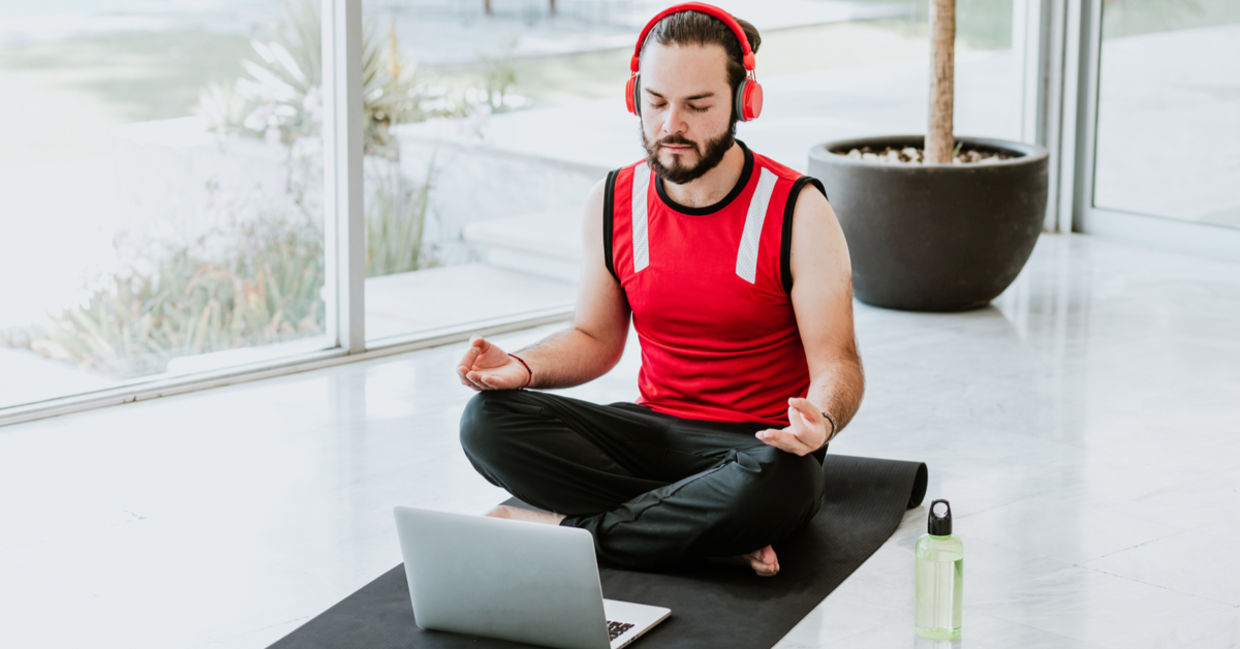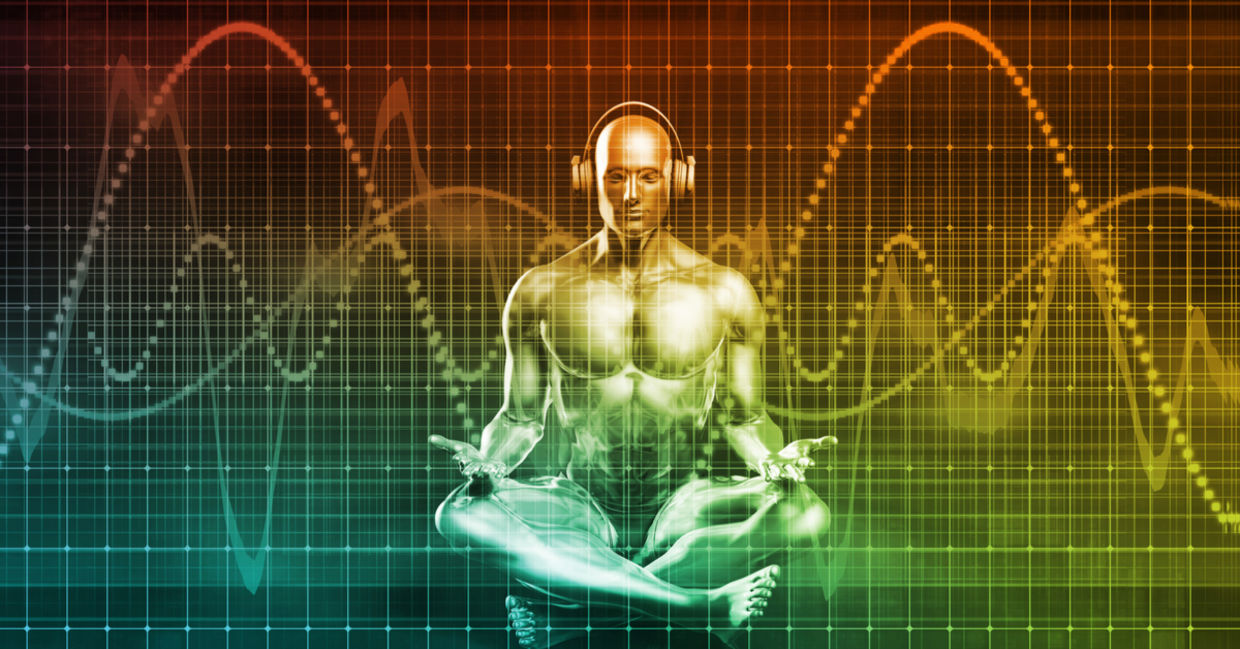
(oOhyperblaster / shutterstock.com)
The advantages of meditation are widespread – from health benefits to the simple practice of relating more calmly to the people around us. Like most good things, meditation requires practice and can be hard work, but that doesn't mean it's impossible. In fact, by finding the type of meditation that's right for you, the process can be very enjoyable indeed. We recommend trying each of these meditations for 10 minutes to begin with, then extending the time gradually as you get more comfortable with the practice that suits you.
1. MINDFULNESS
WHAT: Also known as Vipassana or insight meditation, mindfulness practice entails focusing bare awareness on the object of meditation – be it the breath, physical sensations, outside sounds or all of the above.
HOW:
1. Assume a comfortable but alert upright position.
2. Gently bring your attention to the breath, and note each inhalation and exhalation – without trying to change anything or breathe in any specific way.
3. When you notice your mind wandering (as it most certainly will, over and over!) gently bring your attention back to the breath and start again.
WHY: According to the teachings of the Buddha, applied mindfulness meditation – along with strong concentration and appropriate moral conduct – leads to enlightenment, or liberation from suffering. As an added bonus, mindfulness meditation has been found to lower stress and fight mental health issues.

(Acme Fashions / Shutterstock.com)
2. MANTRA
WHAT: Mantra meditation is similar to mindfulness meditation, with the addition of a repetition of a simple word or phrase.
HOW:
1. Pick your mantra – it could be a simple word like "relax," "serene" or "peace," or something more spiritual like "ohm" or "so-hum" (ancient Sanskrit words meaning "nothingness" and "I am that").
2. Assume a comfortable but alert upright position, and spend 30 seconds just sitting with your eyes closed before starting your mantra.
3. As effortlessly and silently as possible, begin repeating your mantra to yourself (not aloud), over and over. There's no need to try to change or stop your thoughts in anyway – just keep whispering the word silently to yourself.
WHY: The repetition of a mantra quiets the breath and as a result the mind, according to New Age guru Deepak Chopra, bringing the meditator into the field of "pure consciousness." From a beginner's perspective, using a mantra can help focus and sharpen a mind prone to wandering during meditation.

(Aleksandr Lavrinenko / Shuttersock.com)
3. WALKING
WHAT: Walking meditation can be just as profound as sitting meditation, and helps bring strong awareness to the body and to physical sensations.
HOW:
1. Choose a small, flat path on which to walk back and forth, preferably no more than 10 paces in each direction.
2. Before you start moving, stand still for a few moments and consciously bring your attention into the body. Notice the sensations of your feet on the ground, clothes on your body, and sun and wind on your skin.
3. Begin walking as slowly as you can while still feeling natural, keeping your attention within the body. When the attention drifts to outside sights or thoughts (and it will!) gently bring it back to the movement in the lower half of your body – the soles of your feet on the ground, the bending and extending of the knee and the curl of your toes.
WHY: The simple exercise of stepping from foot to foot naturally creates a meditative state, calming the mind and cultivating sharper awareness. Walking meditation can be a fantastic stepping stone to bringing mindful attention to every part of the day – from walking to work to cooking or doing the dishes.

(Singkham / Shutterstock.com)
4. VISUALIZATIONS
WHAT: Guided visualizations or imagery bring the meditator into a deeply relaxed state, to imagine a particular scene.
HOW:
1. Find a quiet area and sit in a comfortable position.
2. Close your eyes and breathe deeply, and begin to visualize yourself in a calm environment – perhaps an empty beach, a meadow, or even just a backyard hammock.
3. Engage all of your senses by imagining how your peaceful place looks, feels, sounds, smells, and even tastes. The more vividly you capture your imagined location, the greater the healing effects of the technique, according to practitioners.
4. To enhance the experience, you can listen to ambient sounds related to your imagined environment (such as a recording of ocean waves if you're visualizing a beach). You can also try out these recordings and scripts to guide you through the exercise.
WHY: Guided visualizations have been found to lower blood pressure and stress hormone levels, by quieting the body and the mind. Specific visualizations can also be used to help achieve specific goals, by picturing success and confidence before the event.

(Marcos Castillo / Shutterstock.com)
5. BRAINWAVE ENTRAINMENT
WHAT: Also known as soundwave meditation or binaural beats, brainwave meditation uses music on five different frequencies - Beta, Alpha, Theta, Delta and Gamma – to access and alter different levels of the subconscious mind.
HOW:
1. Choose the benefit you'd like to work on - Alpha for creativity and deep relaxation; Beta for focus and concentration; Theta for meditation, insight and memory; Delta for deep sleep and healing; and Gamma to increase cognition and improve IQ.
2. Choose a comfortable position – either sitting or laying down – and spend a minute or two relaxing your body.
3. Play some music from the frequency you'd like to work on (the links above are a great place to start), and focus on what you desire, using creative visualization and positive self-talk to gradually start building new neural pathways. Hold on to that thought/image/emotion as long as you can.
WHY: Brainwave meditation is not only relaxing - practitioners believe it can open your mind to new ideas, inspire you and help you to think more creatively.

(kentoh / Shutterstock.com)






